A suburban Melbourne mansion throws a curveball with a hemispherical zinc roof

Melbourne-based architecture practice Wood Marsh is known for pushing its singular, site-specific approach. And Towers Road House, a two-storey home in the Melbourne suburb of Toorak, is no exception, as its expressive volume composition and bold manipulation of geometry attest.
‘Our alignment is much more with the visual arts, music and film, with things that we find inspiring,’ explains the firm’s co-director Roger Wood. ‘Our clients liked our work and came to us because they were prepared to take a risk. They certainly didn’t want a facsimile of other peoples’ projects.’
Other than a request for a large gallery to display an impressive art collection, the clients – part of one of Australia’s richest families, the Besens – offered very little else in terms of design instruction. The completed house features a series of connected, curved concrete surfaces with two deep cut-outs. One of these voids forms an impressive double-volume entrance space, set in deep shadow, due to a hemispherical zinc roof that appears to float over the house.
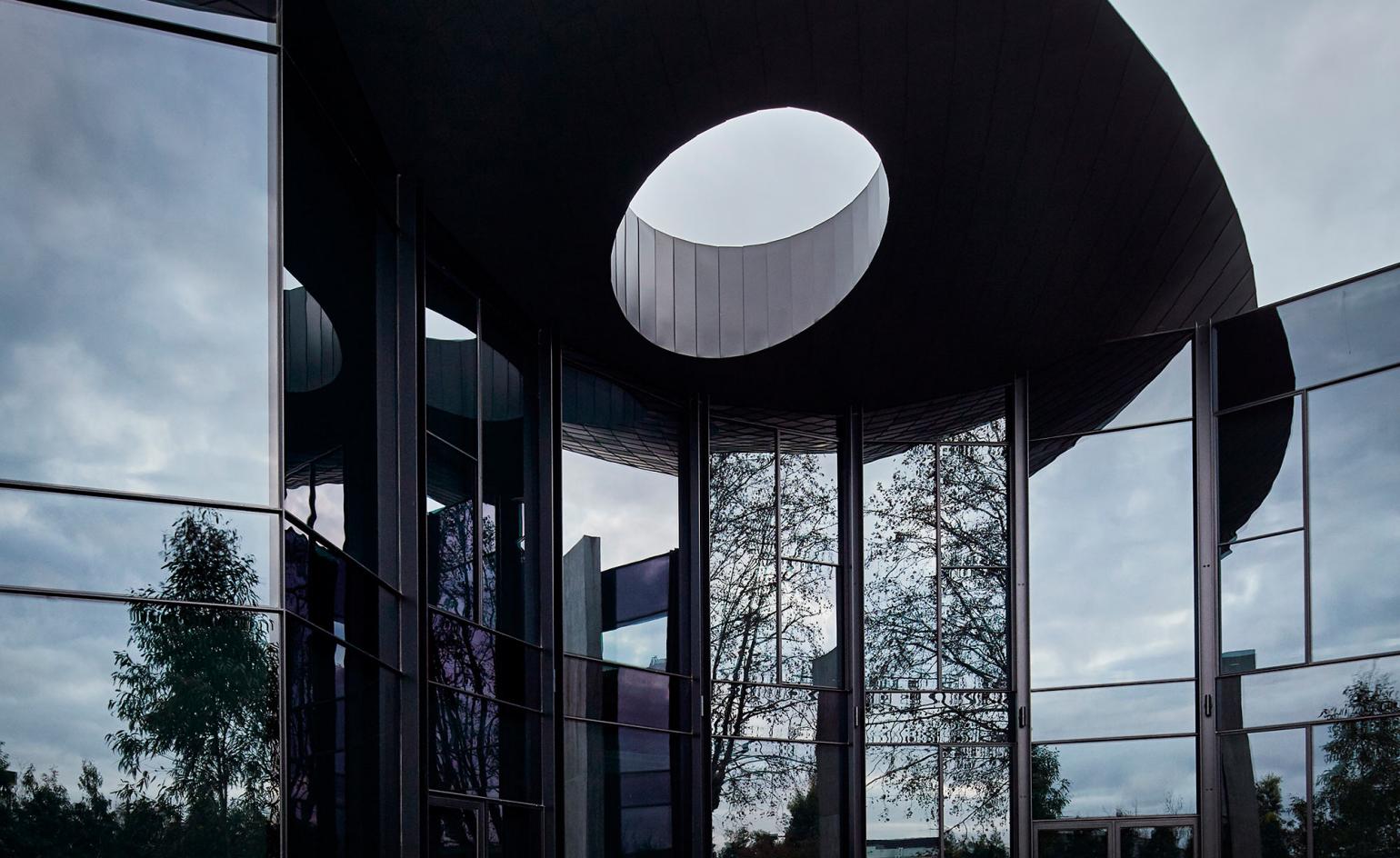
An oculus in the deep overhang above the courtyard floods the outdoor entertaining space with natural light.
Curtain wall technology employed to the north elevation creates an abundance of natural light in the living spaces on the ground floor and the bedrooms above, while an oculus in the deep overhang above the courtyard brings unexpected light into the outside entertaining space.
The house’s rounded walls, which make reference to Christo and Jeanne-Claude’s Running Fence and Giorgio de Chirico’s scalelessness, are rarely punctured, and appear to rise and fall within the landscape. ‘The curvilinear walls create a chiaroscuro effect through the careful manipulation of light and shade,’ says Wood. They also appear to oscillate and recede within the terrain. This was in response to an awkward site level change, which has been taken up by a canny manipulation of the topography.
Theatrical overtures extend into the house, particularly as you enter through the only significant aperture in the façade into a moody, 8m-high foyer. The void then opens up into a generous, sunken living room space bookended by two kitchens and a study. A dramatic double staircase leads to the first-floor bedrooms, while another series of steps leads down to the home's underbelly, which houses the subterranean gallery (seved by a hydraulic lift), a wine and cigar lounge, and a garage large enough for six cars.
From a public perspective, Towers Road House addresses the street in its entirety, in the sense that it lacks any fencing, a standard Toorak residential accoutrement. ‘We wanted to offer something to the neighbourhood,’ says Wood. ‘So we created a beautiful garden right up to the street, which then falls down to the house, following the natural contours.’
The house is also built around a 150-year-old plane tree, which has been lovingly protected and nurtured, securing its place as an important element in the landscape.
Overall, the material palette is monochromatic and spare. ‘Our buildings are all designed to take on a patina,’ says Wood. Externally, the team specified 4.2m-high sandblasted planks for the concrete shuttering to create a more exaggerated grain. The concrete is both incredibly tactile and sharp at the corners, and there is no discernible curvature at the edges. ‘The clients also wanted a quiet temple-like sanctuary, with spaces where they could read a book or work from home,’ says Wood. This desire for intimacy is reflected in the use of materials like the acoustic-lined charcoal-coloured upholstery in the basement den and the wide Dinesen oak floorboards. Towers Road House is a poetic series of spaces, both pragmatic and experiential, that belong in a house enjoyed by both its new owners, a local Toorak family, and their neighbours.

A verdant foil surrounds the house’s monumental raw concrete exterior
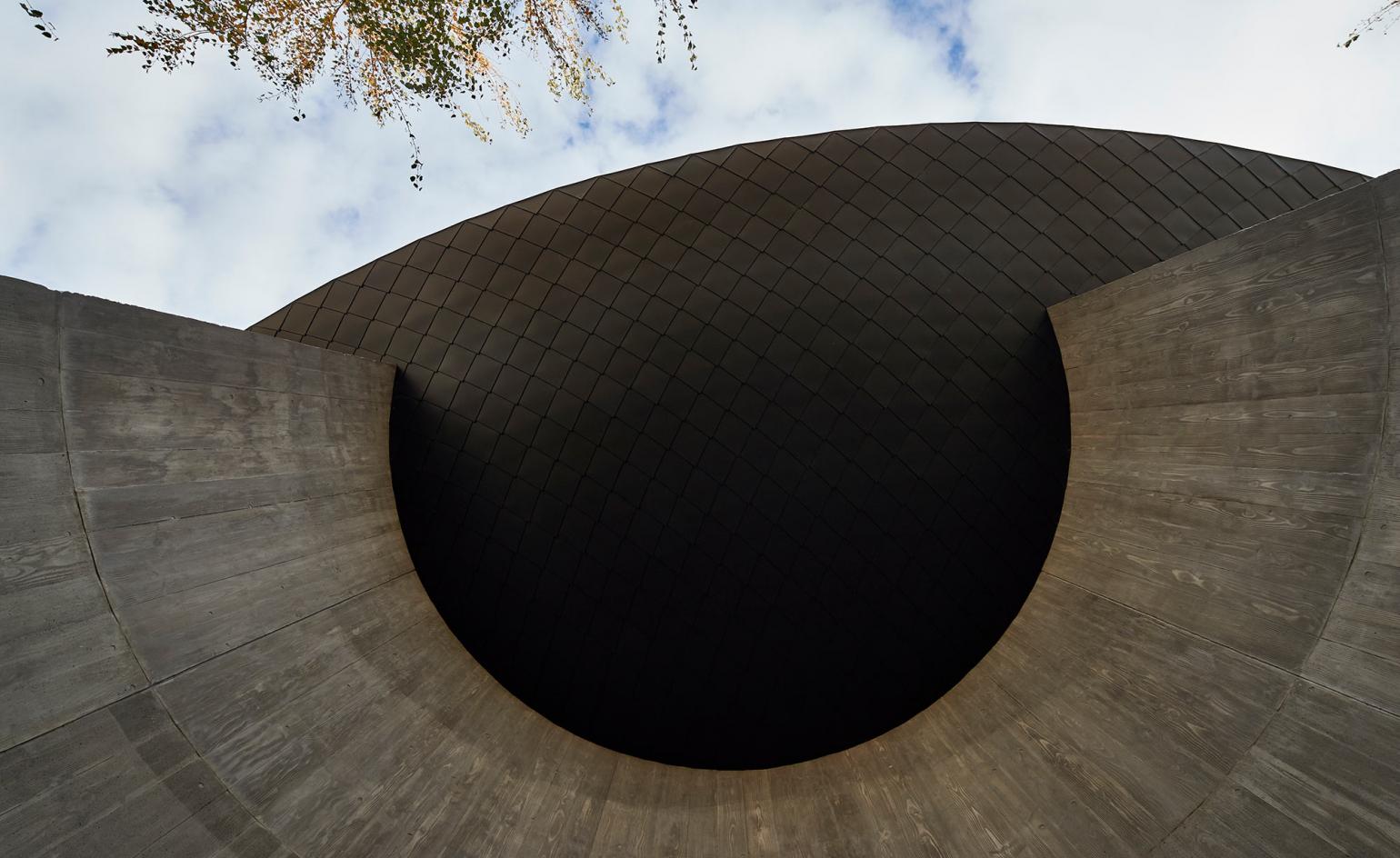
The zinc-clad bowl roof
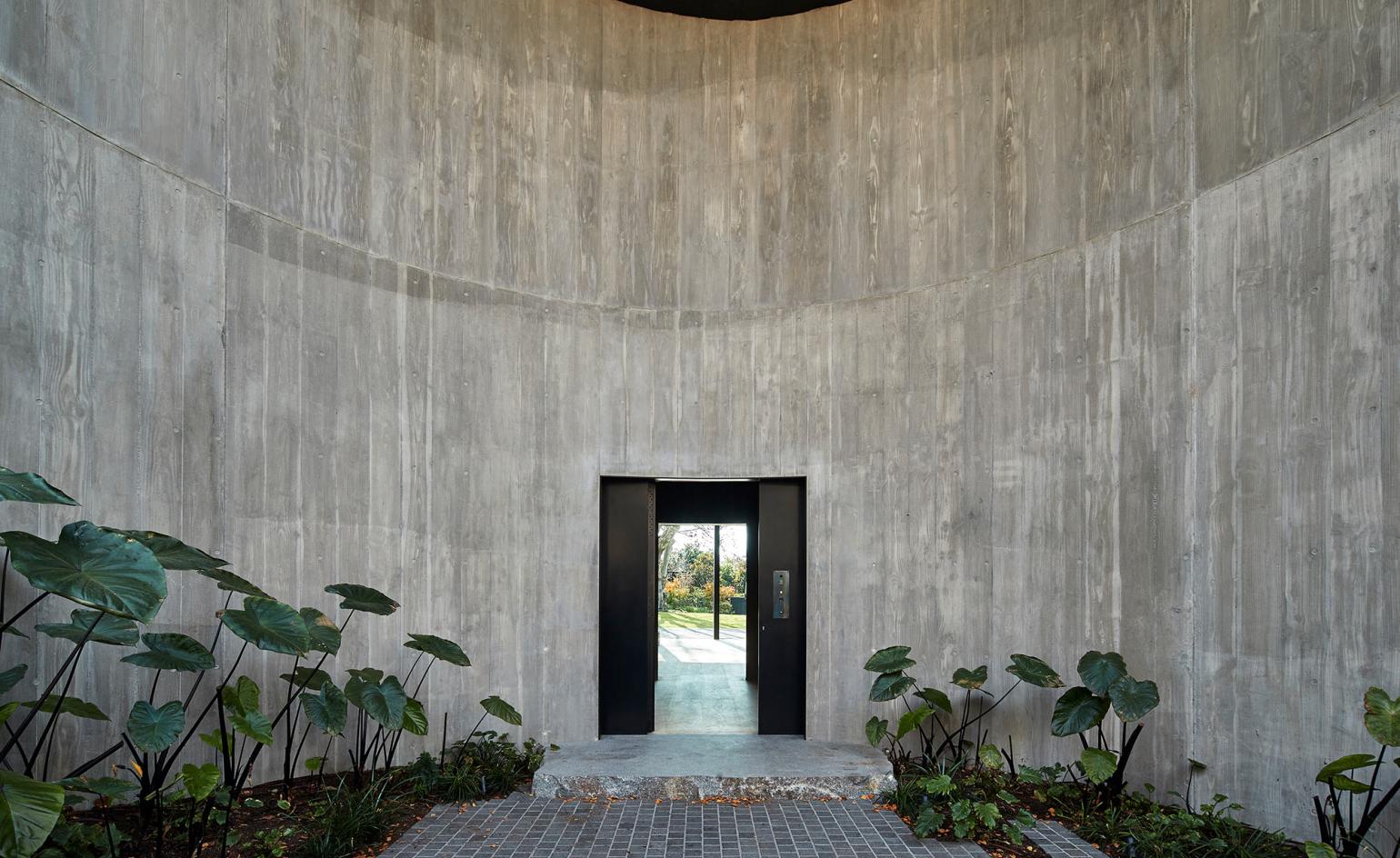
The only significant aperture in the facade, the entrance, leads into a sunken living space with views of Taylor Cullity Lethlean’s extensive landscaping
INFORMATION
For more information, visit the Wood Marsh website
Receive our daily digest of inspiration, escapism and design stories from around the world direct to your inbox.
-
 Veronica Ditting’s collection of tiny tomes is a big draw at London's Tenderbooks
Veronica Ditting’s collection of tiny tomes is a big draw at London's TenderbooksAt London bookshop Tenderbooks, 'Small Print' is an exhibition by creative director Veronica Ditting that explores and celebrates the appeal of books that fit in the palm of your hand
-
 How Beirut's emerging designers tell a story of resilience in creativity
How Beirut's emerging designers tell a story of resilience in creativityThe second in our Design Cities series, Beirut is a model of resourcefulness and adaptability: we look at how the layered history of the city is reflected in its designers' output
-
 A day in Ahmedabad – tour the Indian city’s captivating architecture
A day in Ahmedabad – tour the Indian city’s captivating architectureIndia’s Ahmedabad has a thriving architecture scene and a rich legacy; architect, writer and photographer Nipun Prabhakar shares his tips for the perfect tour
-
 The Architecture Edit: Wallpaper’s houses of the month
The Architecture Edit: Wallpaper’s houses of the monthFrom wineries-turned-music studios to fire-resistant holiday homes, these are the properties that have most impressed the Wallpaper* editors this month
-
 An Australian holiday home is designed as a bushfire-proof sanctuary
An Australian holiday home is designed as a bushfire-proof sanctuary‘Amongst the Eucalypts’ by Jason Gibney Design Workshop (JGDW) rethinks life – and architecture – in fire-prone landscapes, creating a minimalist holiday home that’s meant to last
-
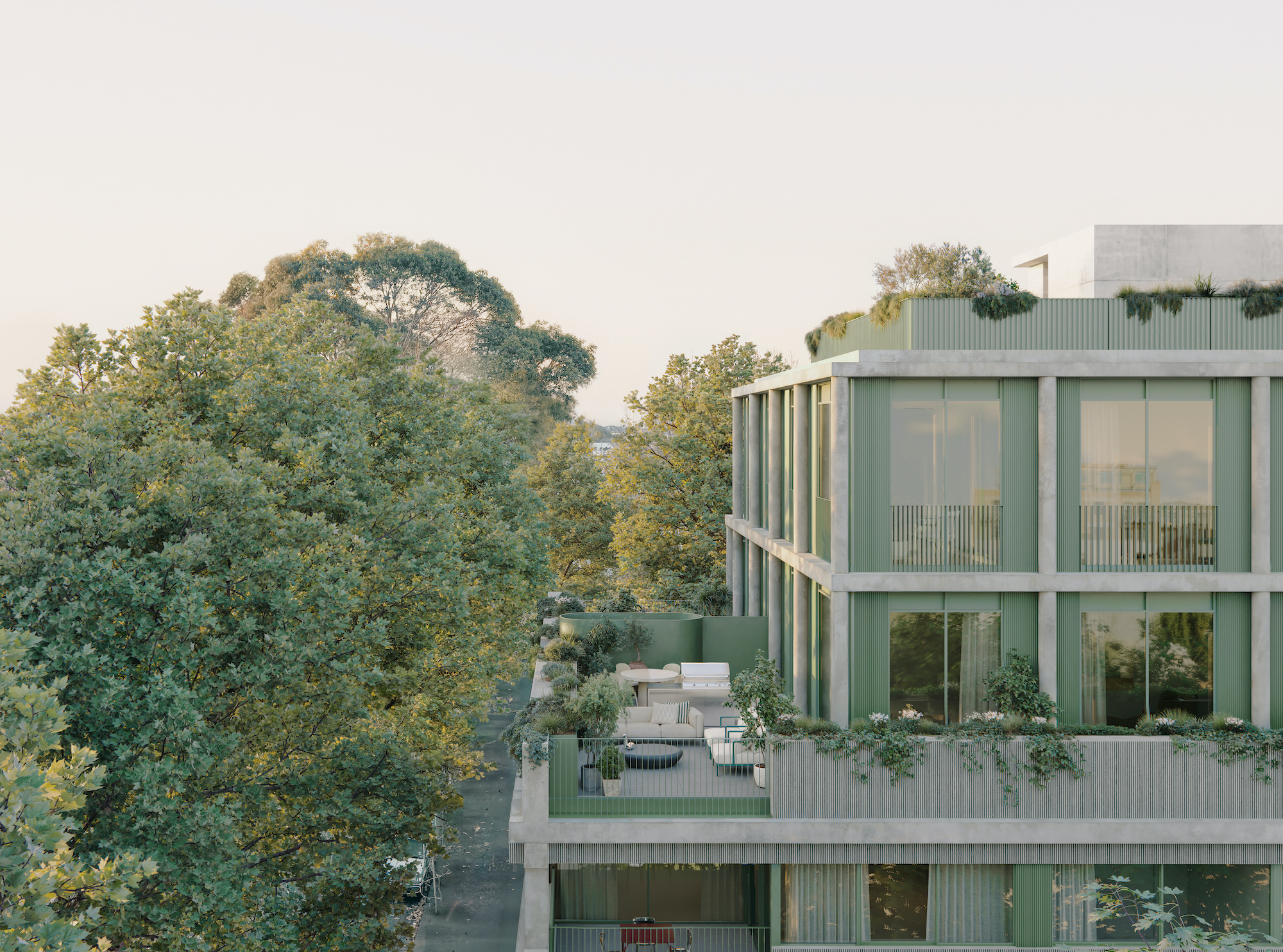 Neometro is the Australian developer creating homes its founders ‘would be happy living in’
Neometro is the Australian developer creating homes its founders ‘would be happy living in’The company has spent 40 years challenging industry norms, building design-focused apartment buildings and townhouses; a new book shares its stories and lessons learned
-
 The Melbourne studio rewilding cities through digital-driven landscape design
The Melbourne studio rewilding cities through digital-driven landscape design‘There's a lack of control that we welcome as designers,’ say Melbourne-based landscape architects Emergent Studios
-
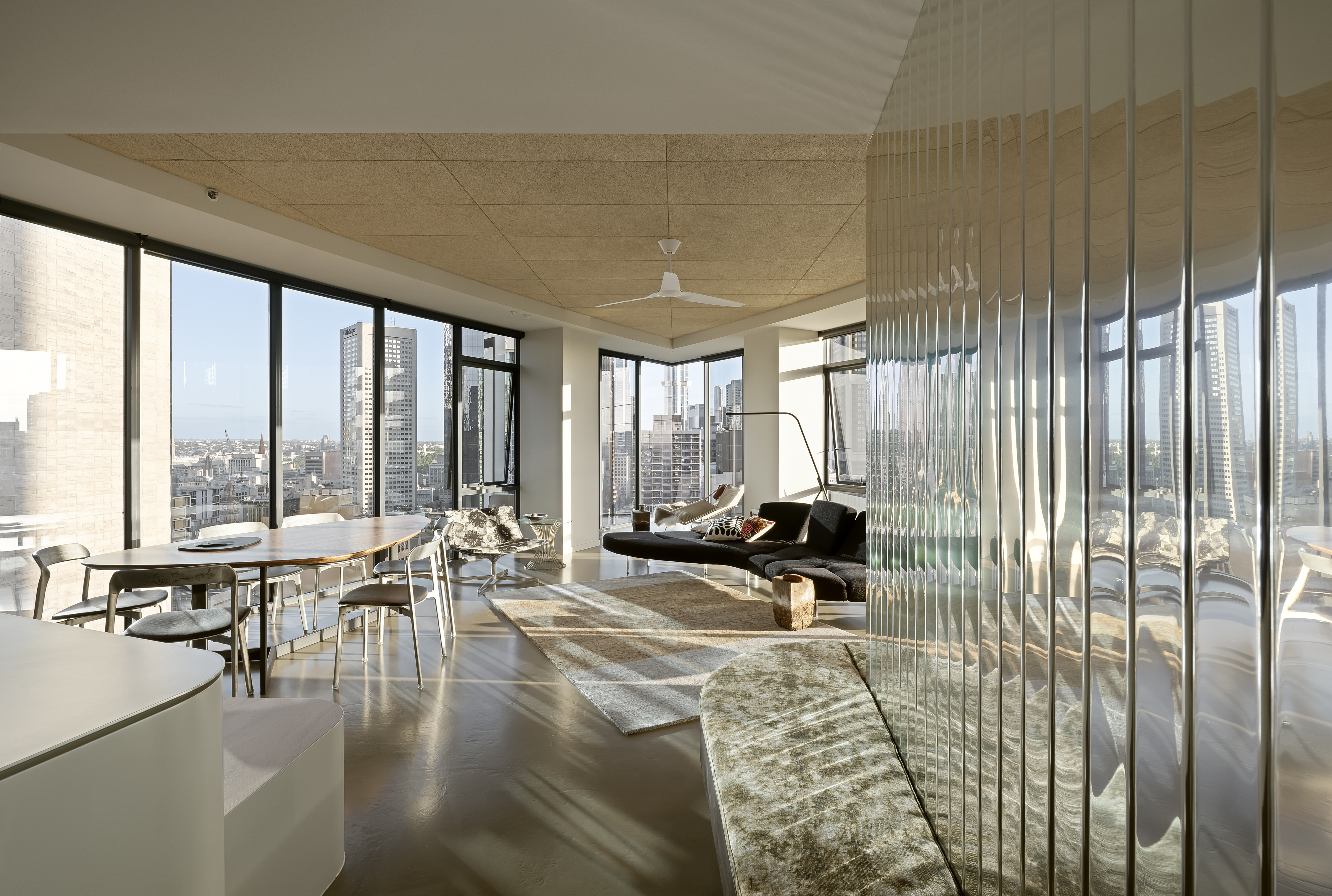 A Republic Tower apartment refresh breathes new life to a Melbourne classic
A Republic Tower apartment refresh breathes new life to a Melbourne classicLocal studio Multiplicity's refresh signals a new turn for an iconic Melbourne landmark
-
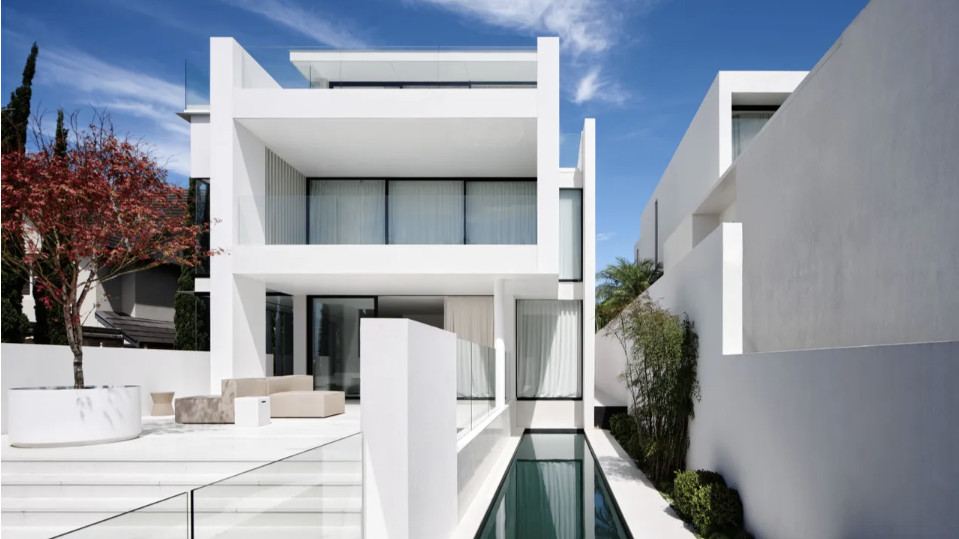 A Japanese maple adds quaint charm to a crisp, white house in Sydney
A Japanese maple adds quaint charm to a crisp, white house in SydneyBellevue Hill, a white house by Mathieson Architects, is a calm retreat layered with minimalism and sophistication
-
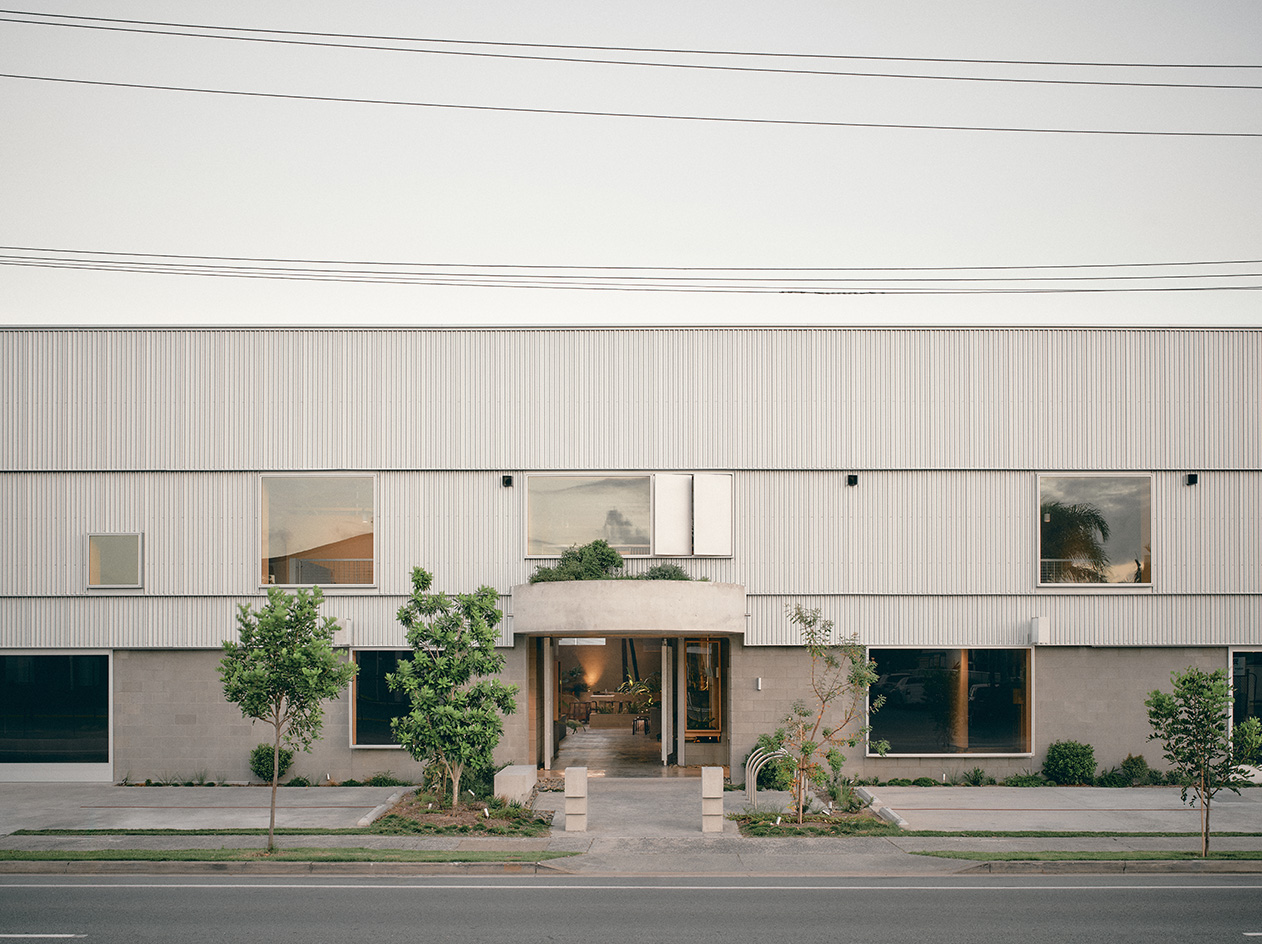 A redesigned warehouse complex taps into nostalgia in Queensland
A redesigned warehouse complex taps into nostalgia in QueenslandA warehouse in Queensland has been transformed from neglected industrial sheds to a vibrant community hub by architect Jared Webb, drawing on the typology's nostalgic feel
-
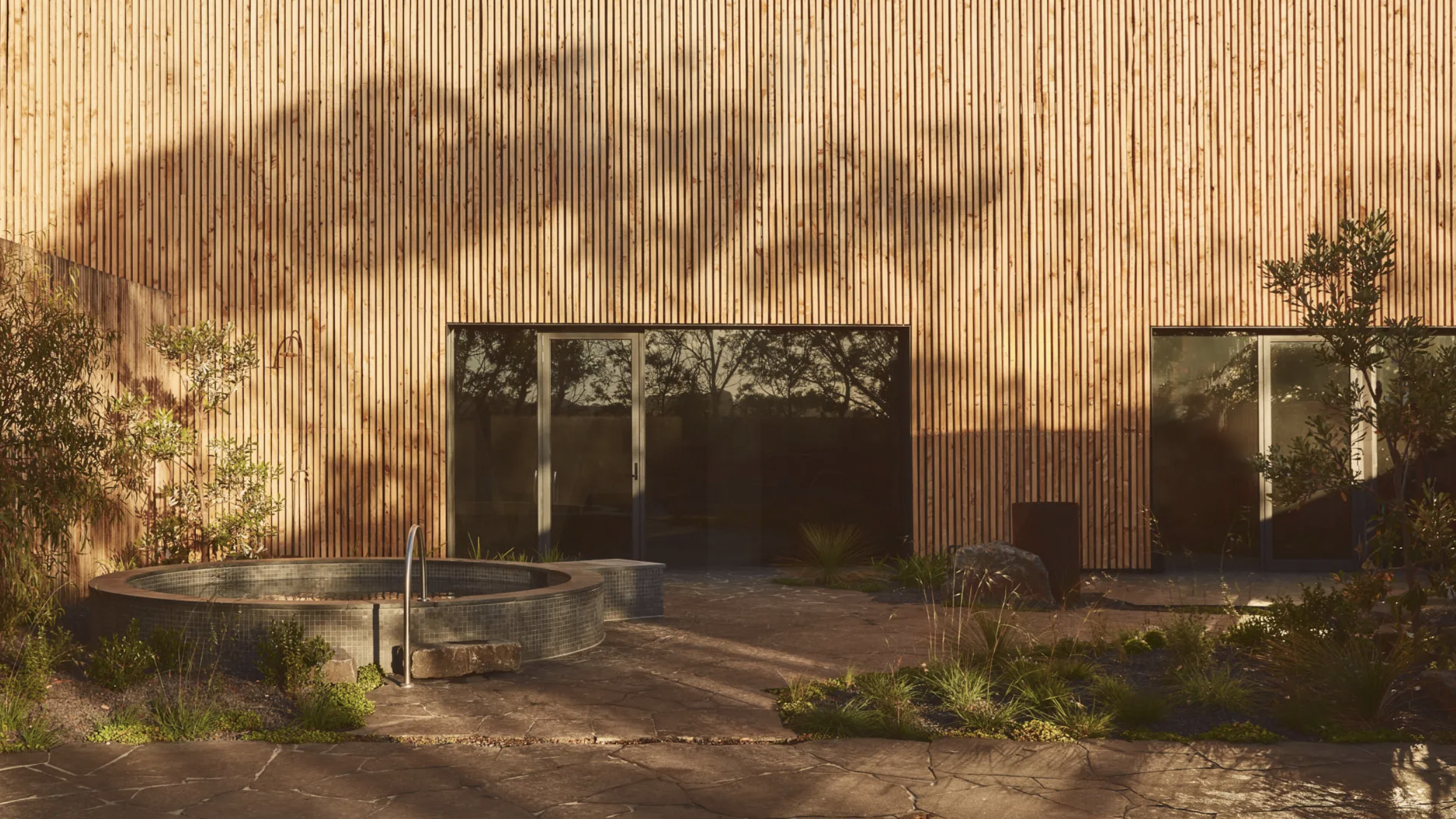 Australian bathhouse ‘About Time’ bridges softness and brutalism
Australian bathhouse ‘About Time’ bridges softness and brutalism‘About Time’, an Australian bathhouse designed by Goss Studio, balances brutalist architecture and the softness of natural patina in a Japanese-inspired wellness hub